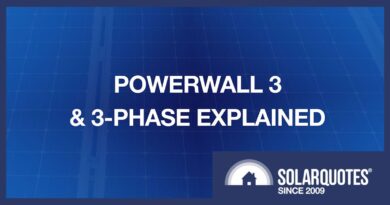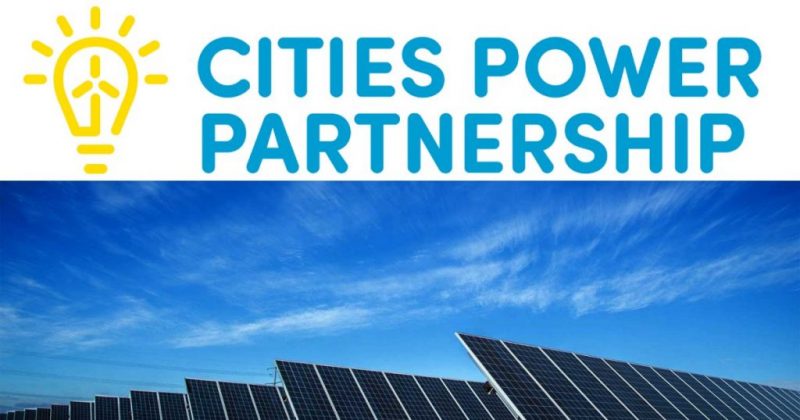VIC Remote Solar Shutdown Rules: Everything You Need To Know

Victoria has launched a consultation (open until August 2, 2023) about their upcoming remote solar shutdown rules.
The state is calling for input into the design of an Emergency Backstop Mechanism (EBM), which allows your Distribution Network Service Provider (DNSP) to temporarily shut down or zero-export your system – to protect the grid.
In Victoria, these are the DNSPs whom the Australian Energy Market Operator (AEMO) can demand shut down your solar inverter from July 2024:
- CitiPower – Melbourne CBD
- Powercor – Western Victoria
- Jemena – Western inner Melbourne
- AusNet – Eastern Victoria
- United Energy – South-east Melbourne and the Mornington Peninsula
Sounds scary huh?
Truth be told – it’s nothing to worry about – if it’s implemented sensibly.
But be worried if it copies QLD’s dog’s breakfast of a solar shutdown mechanism. And if it’s implemented like the brute-force design in WA, that’s not great, either. But suppose Victoria can hold their noses and learn from South Australia’s hard work on remote inverter shutdown and control. In that case, you’ll have a good system with benefits that outweigh the few dollars in a year in lost feed-in-tariff revenue from the occasional grid event.
Why Does The VIC Government Want To Switch Off My Solar?
Soon the mainstream Victorian media will discover this consultation paper. Get ready for many scare stories about the big bad government switching off your hard-earned solar system and robbing you of your sweet solar energy.
Ignore the scare stories. I’m no fan of government departments, but this remote shutdown mechanism is needed to avoid blackouts as rooftop solar penetration grows.
It’s really that simple.
As the Vic Government puts it, the shutdowns will only happen during:
“a minimum system load emergency which is rare but has the potential to lead to local or state-wide blackouts.”
“By managing the risks during rare energy emergency events, more solar can continue to be installed safely and greater levels of renewable energy will be available at all other times”, the Victorian government said in launching the consultation.”
The Emergency Backstop Mechanism will only be required on new and replacement rooftop solar systems below 200kW.
As the consultation paper explains (PDF), the EBM would allow the Australian Energy Market Operator (AEMO) to direct either curtailment or shutoff of home PV systems to avoid minimum system load emergencies.
The paper gives South Australia as an example of how an EBM has already been deployed in Australia – which seems the obvious model to emulate. More on that later.
How The System Should Be Implemented
The solution I recommend Victorians ask for in this consultation is – in simple terms:
“A signal sent over the internet to the inverter which instructs the inverter to go into zero export mode until further notice.”
In more technical terms, this should be implemented via CSIP-AUS (as per IEEE 2030.5).
What The Hell Is CSIP-AUS
CSIP-AUS, or the Common Smart Inverter Profile – Australia, is a standard for controlling inverters over the internet, allowing a third party to tell your inverter to reduce its exports to a certain kW. In the context of Victoria’s Emergency Backstop Mechanism, it would put your inverter into zero export mode during a grid emergency- when there is too much energy in the grid and not enough demand to soak it up.
To join the remote shutdown party, either:
- your inverter has to talk CSIP-AUS,
- or your inverter has to talk to a ‘gateway device’ in your switchboard that talks CSIP-AUS,
- or your inverter has to talk to a cloud service that talks CSIP-AUS.
Across the border, SA Power Networks do all the hard work testing inverters that claim they are ready to do the CSIP-AUS thing, while the Clean Energy Council gets the glory by putting the test results on a pdf on their website. The current list is here at the time of writing, but that link will break as soon as the list is updated. So you’ll then need to go here, and click on the link labelled”Inverters with Software Communication Clients”.
South Australia Are Paving The Way
From 1 July 2023, all solar systems installed in South Australia1 will need to be CSIP-AUS compatible, so they are ‘Dynamic Export Capable’. So there should be many compatible inverters on the market by mid-2024 when Victoria needs them. Interestingly, only Fronius, Redback, Solar Edge, SolaX and Sungrow have built CSIP-AUS into their inverters so far2.
Why I like CSIP-AUS
Stupid implementations of ‘remote solar shutdown’ capability like Queensland’s and Western Australia’s stop your inverter dead. That means you lose all your solar and will rely 100% on grid power during an ‘event’.
With CSIP-AUS the system can be much more polite and temporarily limit exports to zero, with your solar happily generating enough to power your home during an emergency event.
That will piss solar owners off a lot less than switching off their inverter and forcing grid electricity into their home.
Also, CSIP-AUS sets the stage for Dynamic Exports, a way for the DNSPs to granularly ramp your exports up and down to manage the grid. Although it sounds bad, it should mean your average export limit actually increases.
Why CSIP-AUS Remote Shutdown Is The Least Worst Option
The boffins at Victoria’s Department of Energy, Environment and Climate Action reckon:
” that emergency curtailment of rooftop solar via an emergency backstop mechanism may be needed for only 12-19 hours per year for the period between 2025-2027. It is estimated that this will result in between $4 and $7 of lost feed in tariff payments per year for households with solar.”
Losing $4-$7 per year is worse than losing $0, but it’s better than the alternative: blacked-out suburbs. Another word for it is ‘curtailment’; as renewable penetration rises, we’ll have to get used to a little curtailment. It’s the tiny price we pay to get to a mostly renewable grid.
Tell The VIC Government You Want A CSIP-AUS Based System
If you want a say on Victoria’s Emergency Backstop Mechanism, you can give feedback until August 2. I’m sure they’ll get lots of angry emails raging against the whole concept of remote shutdowns, but it’s gonna happen anyway, so I’d suggest your efforts would be better placed getting the system design right.
I’d propose:
- the ‘bat signal’ sent out in a grid emergency should put solar systems into zero export, not switch off the inverter.
- that Victoria uses CSIP-AUS as the mechanism for the EBM.
- that Victoria ignores Dan Andrews’ inferiority complex and copies SA’s playbook – saving the Victorian taxpayer lots of money.
- Melbourne gives Adelaide the Grand Prix back in appreciation for all our hard work on this matter.
You can email your submission to [email protected] or fill in the form here.
Footnotes
Original Source: https://www.solarquotes.com.au/blog/vic-remote-solar-shutdown/


















